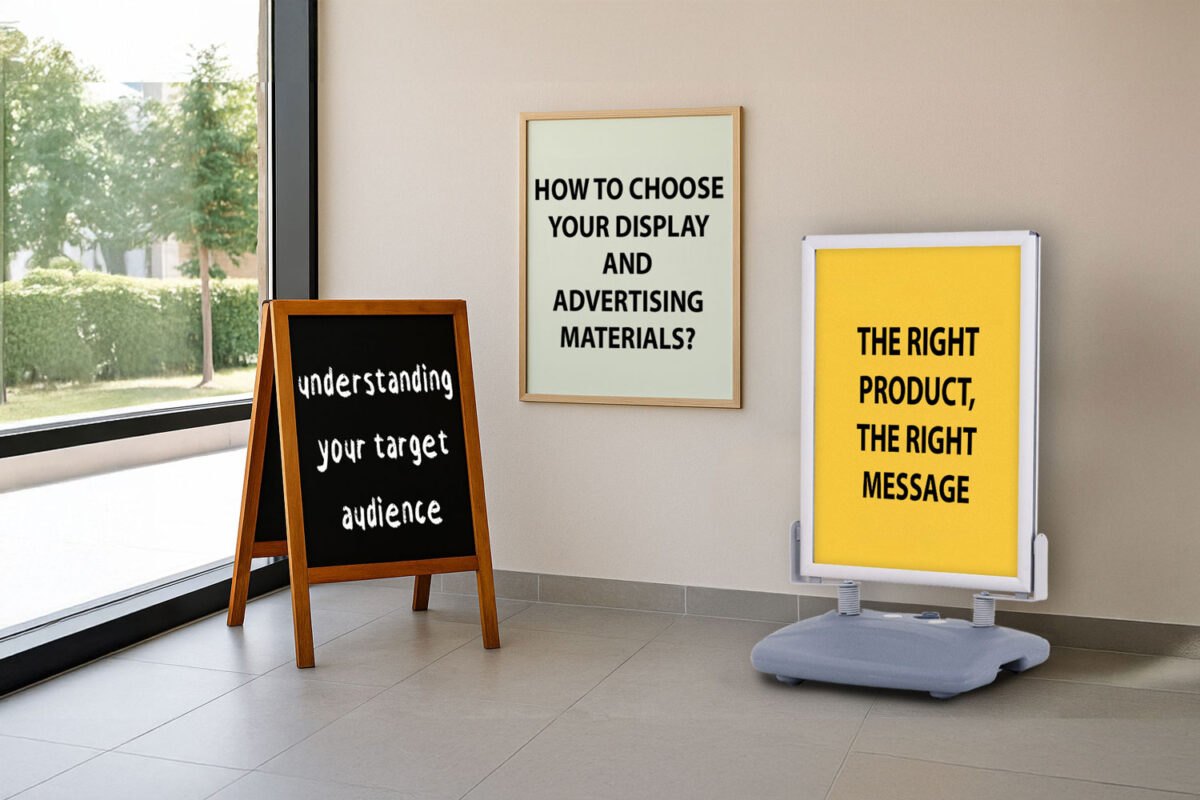Science Explains the Smart Choices!
In today’s crowded advertising world, standing out is harder than ever. But with the right display materials and marketing tools, you can rise above the noise. Even better—science backs this up!
Every day, we’re exposed to thousands of ads, most of which we consciously or subconsciously ignore. But some displays and advertisements succeed in grabbing our attention, entertaining us, and effectively delivering their message. That’s why choosing the right strategy and display product is crucial.
1. Understanding Your Target Audience is the Key to Everything
An effective marketing strategy starts with a clear understanding of your audience. Many businesses define their target market by demographic factors, but diving deeper into their emotions, motivations, and lifestyles yields better results.
Ask yourself the following:
- What is the age range of my audience? What industries do they work in?
- What does their daily life look like? What kind of change do they seek?
- What is their level of education, and what are their hobbies or interests?
- How does my product add value to their lives?
The answers will shape both your messaging and the display tools you choose.
2. The Right Product with the Right Message Creates the Right Impact
🎯 Wooden A-Board Chalkboard:
With its wooden frame and chalkboard surface, this nostalgic-style board is perfect for handwritten messages that can change daily. For example:
“There’s no problem a strong coffee can’t solve.”
“No slogan needed.”
This informal and approachable style appeals to a younger, more creative audience.
🧭 Wind Sign Sidewalk Signs:
Professional, eye-catching, durable
Featuring an anodized aluminum frame and wind-resistant structure, this board offers a more serious and corporate look. A suitable message might be:
“First-class service in the comfort of your own home.”
As you can see, the same purpose served with different products leads to very different perceptions—depending on the audience.
3. Build Brand Awareness Through Unconventional Means
Brand awareness is not just about showing your logo. It’s also about your tone, colors, humor, and overall vibe.
Research by Struppek (2014) and Buljubasic (2015) shows that ads presented in unusual ways create longer-lasting impressions. That’s why it’s smart to:
- Use unconventional display forms
- Experiment with color and design
- Try unexpected, even humorous messages
Example:
Dynamic Stands are perfect for showcasing your visuals. Add brochure holders or shelves to make them even more effective. Make sure your brand name and logo are al
4. Color Choices: No Single Right Answer, But Many Smart Ones
One common question: “What color should I use?”
The answer: It depends on your brand image, industry, campaign theme, and audience.
Poor Fit:
A brand that emphasizes natural, minimalist aesthetics might clash with a Golden Look Snap Frame, as it feels too ornate.
Better Alternatives:
- Coloured Frames (available in all RAL colors)
- Wooden Look Snap Frames (ideal for brands emphasizing nature or sustainability)
Color psychology is powerful. The right color choices can transform how your message is perceived and remembered.
Conclusion: Don’t Just Be Seen—Be Meaningful
Display and advertising tools aren’t just about visibility. They reflect your brand’s identity. Scientific studies suggest that:
- Emotional connections with audiences matter
- Visuals should reinforce your message
- Unconventional formats increase recall
- Color choices impact perception
Every ad should aim not just to be seen, but to be remembered—and preferred.
Remember:
Your advertising tools are a silent but powerful form of communication. Choosing the right product with the right design can elevate your brand and leave a lasting impression.
RESOURCES:
Buljubasic, I. (2015). Impact of unconventional advertising on performance of cultural institutions in city of Osijek. Interdisciplinary Management Research, 11, 1097-1105.
Jurca, M. A. (2010). The forms of unconventional advertising – a theoretical approach. Management and Marketing Journal, 2, 323-333.
Murwonugroho, W., & Yudarwati, G. A. (2020). Exposure to Unconventional Outdoor Media Advertising. Pertanika J. Soc. & Hum, 28(4), 3407-3424.
Seliger, M. (2008) Visual Rhetoric in Outdoor Advertising, in Durling, D., Rust, C., Chen, L., Ashton, P. and Friedman, K. (eds.), Undisciplined! – DRS International Conference 2008, 16-19 July, Sheffield, United Kingdom. https://dl.designresearchsociety.org/drs-conference-papers/drs2008/researchpapers/42
Shareef, M. A., Mukerji, B., Dwivedi, Y. K., Rana, N. P., & Islam, R. (2019). Social media marketing: Comparative effect of advertisement sources. Journal of Retailing and

